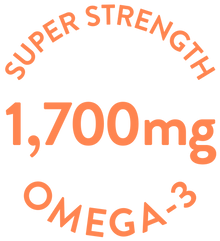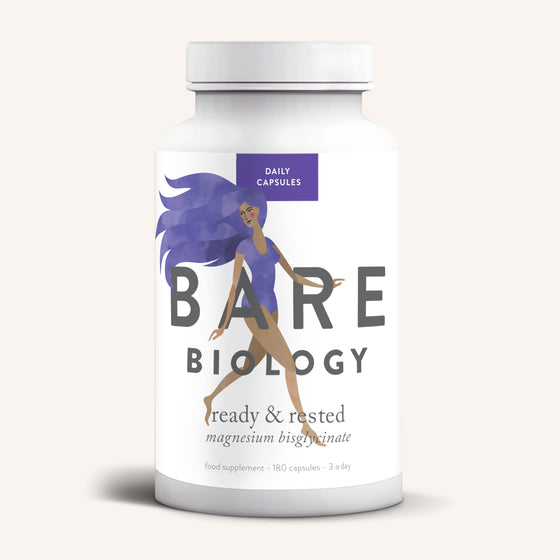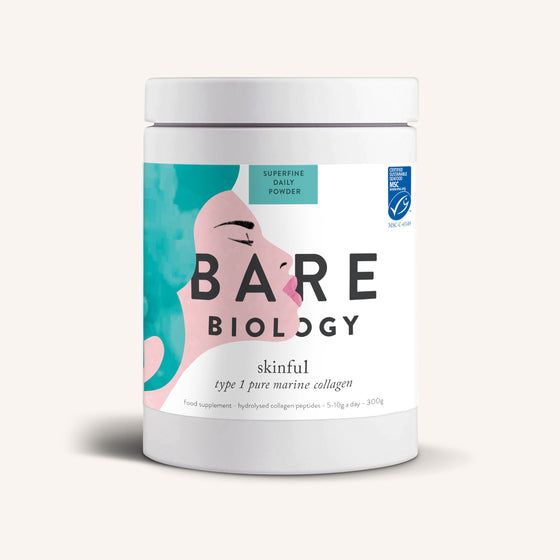Honestly, choosing collagen is more about knowing what you need than Googling yourself into oblivion searching for the mythical "GOAT" of collagen. Here's everything we've learned to help you choose yours.
FYI: If you’re asking questions like what is collagen, what am I buying or how do I take collagen? Follow those links for the answers.
And now, a checklist, but with information in it, too. We can’t tell you what you need, but here’s what we know.
1. Start here: what do you want it for?
Collagen is categorised by type (I, II, III). These types reflect how collagen shows up in different parts of the body, and what those areas need to stay strong and flexible.
Each type has a slightly different mix of amino acids—glycine, proline, and hydroxyproline. These are often called the building blocks, and your body uses them for things like skin elasticity, joint cushioning, and muscle repair.
If you're looking to support your skin, Type I might be the one for you. A mix of Type I and III can give your body a bit more oomph, supporting joints, muscles, and all the internal bits that make your workout—or your gardening session—more of a pleasure than a chore.
Type I – skin, hair, bones, ligaments
Type II – cartilage
Type III – organs, skin, muscles, blood vessels
2. Have you looked at the dosage? Yes, it still makes no sense.
It’s a bit naughty, but the way some collagen brands handle dosage and potency makes comparing products nearly impossible.
Our rule: if it’s cheap, do the maths. Check the Dalton weight (this is the peptide size. The smaller the number, the easier it is to absorb) and how much you actually need to take.
Second rule: if it’s expensive, still do the maths. The collagen market is basically the Wild West. Some products are pricier and require heaps more to meet the effective dose.
3. Look at the ingredient list, do you want to pay for that?
Add-ins like vitamin C (good for wound healing) or hyaluronic acid (great for hydration) can be useful, but they’ll bump up the price, and limit how you use your collagen.
For example, heat breaks down vitamin C, so you won’t be able to stir it into your morning coffee. And anything flavoured, unless it’s clearly natural, probably comes with a few additives and a price hike.
4. How are you with capsules?
If you're not into swallowing pills, powder might be the better option. Most brands recommend a daily dose of 5 to 10 grams, which can mean a lot of capsules. Gulp.
5. Practical stuff: taste, heat, and habits
If you get the ick easily and plan to disguise your collagen in a hot drink, make sure it’s heat-resistant.
And if it includes vitamin C, you’ll have to skip the coffee. Heat breaks it down, so you won’t get the benefit. We don’t make the rules.
Sounds like a lot?
Here’s a nonsense-free summary to jog your memory when you’re staring at the labels:
-
Dalton weight = peptide size. The smaller the number, the better the absorption.
-
Hydrolysed = broken down with water (not chemicals), so it’s easier to digest.
-
Type = I, II or III. Match it to your goals.
And don’t feel silly if it all feels confusing. Collagen research is still evolving, and we’re all—including the scientists—still figuring out exactly how it affects the body.
Which means you can probably ignore the big shiny bold claims. The best way to know if it’s working for you is to try it for a few months and keep a note of how you feel. You know your own body best.






